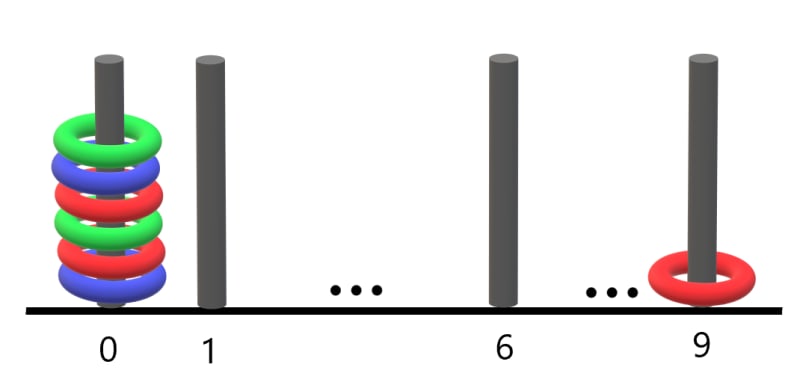There are n rings and each ring is either red, green, or blue. The rings are distributed across ten rods labeled from 0 to 9.
You are given a string rings of length 2n that describes the n rings that are placed onto the rods. Every two characters in rings forms a color-position pair that is used to describe each ring where:
- The first character of the
ithpair denotes theithring's color ('R','G','B'). - The second character of the
ithpair denotes the rod that theithring is placed on ('0'to'9').
For example, "R3G2B1" describes n == 3 rings: a red ring placed onto the rod labeled 3, a green ring placed onto the rod labeled 2, and a blue ring placed onto the rod labeled 1.
Return the number of rods that have all three colors of rings on them.
Example 1:
Input: rings = "B0B6G0R6R0R6G9"
Output: 1
Explanation:
- The rod labeled 0 holds 3 rings with all colors: red, green, and blue.
- The rod labeled 6 holds 3 rings, but it only has red and blue.
- The rod labeled 9 holds only a green ring. Thus, the number of rods with all three colors is 1.
Example 2:
Input: rings = "B0R0G0R9R0B0G0"
Output: 1
Explanation:
- The rod labeled 0 holds 6 rings with all colors: red, green, and blue.
- The rod labeled 9 holds only a red ring. Thus, the number of rods with all three colors is 1.
Example 3:
Input: rings = "G4"
Output: 0
Explanation:
Only one ring is given. Thus, no rods have all three colors.
Constraints:
-
rings.length == 2 * n -
1 <= n <= 100 -
rings[i]whereiis even is either'R','G', or'B'(0-indexed). -
rings[i]whereiis odd is a digit from'0'to'9'(0-indexed).
SOLUTION:
class Solution:
def countPoints(self, rings: str) -> int:
n = len(rings)
rods = [set(), set(), set()]
for i in range(0, n, 2):
if rings[i] == 'R':
rods[0].add(int(rings[i + 1]))
if rings[i] == 'G':
rods[1].add(int(rings[i + 1]))
if rings[i] == 'B':
rods[2].add(int(rings[i + 1]))
return len(set.intersection(*rods))




Top comments (0)